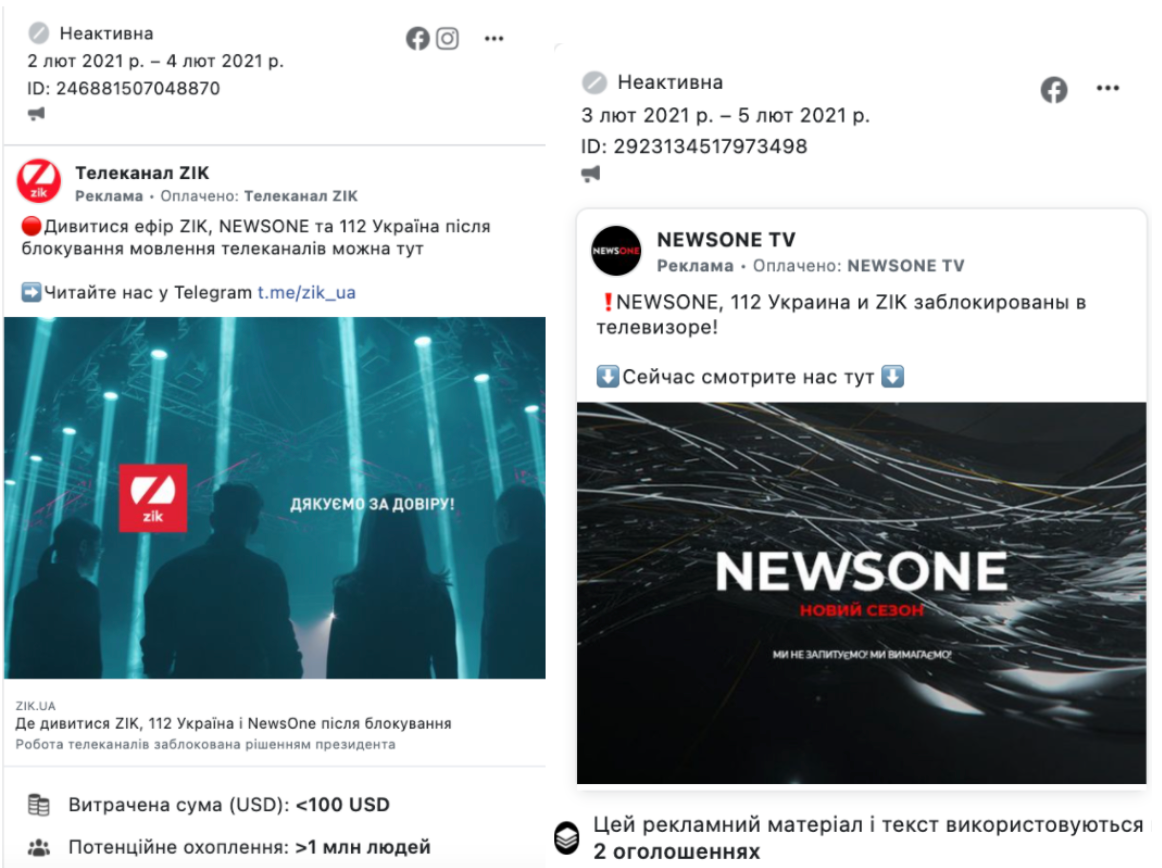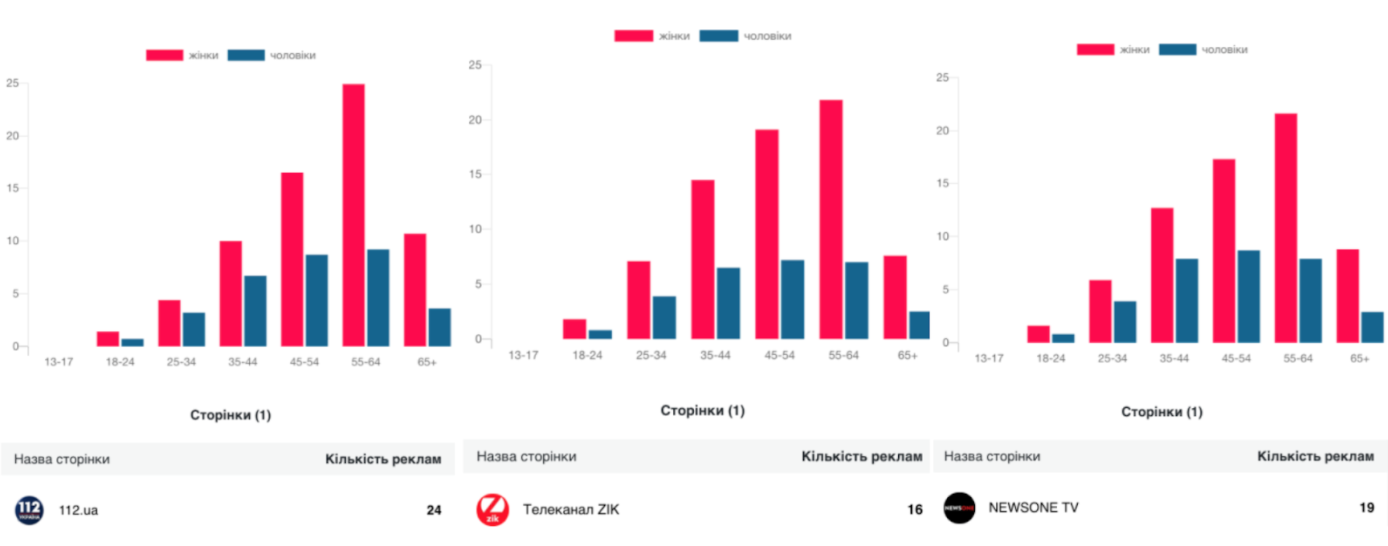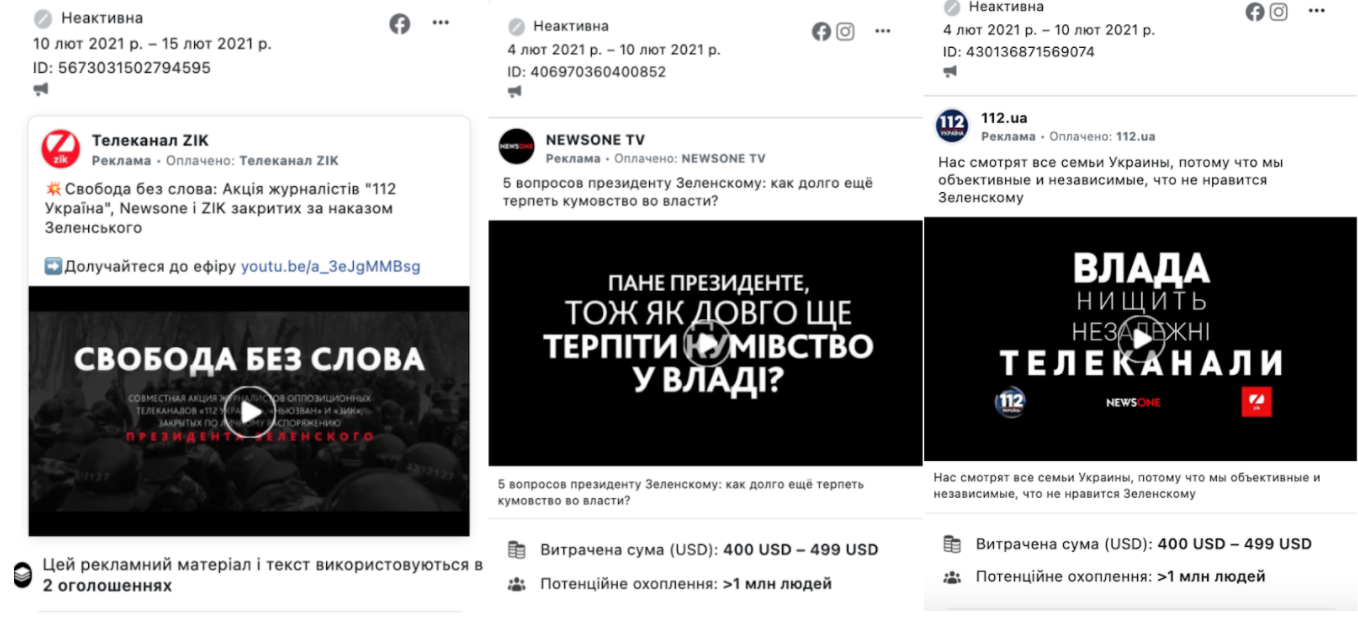Hardly have the TV screens cooled down when the channels banned by the Presidential Decree such as 112, ZIK and NEWSONE shifted to other broadcasting platforms. In addition to traditional methods, such as going on air on YouTube and posting news on their websites, the media resorted to social media they hardly used before to engage with their audiences. In this coverage, OPORA is trying to explore into how the broadcasting ban impacted their activity on Facebook, and whether the ban for broadcasting in one segment of the information space can stop the spread of disinformation.
On the night of February, 2, 2021, the website of the Presidential Office published a Decree enforcing the decision of the Council for National Security of Ukraine on public designation of Taras Kozak, a people’s deputy from the “Opposition Platform – or Life” party. One of the restrictive measures against the MP was to close down several television channels he owned. Some of the top-rated channels included the channel 112, ZIK, and NEWSONE. In 2020, they ranked in the top five of the most popular news channels in Ukraine.
Shortly after the enforcement of the ban, all the three channels plunged into the search for new communication channels with their audiences. For example, the joint live of the 112, ZIK and NEWSONE on YouTube started an hour after the blocking. In addition, the media intensified their activities on social media, such as Facebook.
Facebook pages of the channel 112, ZIK, and NEWSONE had been created long before their ban on Ukraine’s territory. The oldest page is by ZIK; it was created in August, 2010. The next oldest page belongs to NEWSONE , as created in July, 2011. The youngest page is that of the channel 112 as created in September, 2013. As of February, 22, 2021, the total number of followers of the three pages was ab. 1.2 mln: 285,000 for NEWSONE, 450,000 and 460,000 for ZIK and 112, respectively.
In February, we have seen a significantly high increase in posting political ads from the Facebook pages of all three media resources. The total costs from the channel 112 for promotion of political ads on Facebook from June, 2019, to February, 2021, was ab. USD 10,500; whereas 39% of the costs (4,140$) were incurred from January, 20, to February, 18, 2021. Similarly, the costs soared for the pages of the channels ZIK and NEWSONE: in January-February, 2021, the pages invested into political ads 44%, each, of the general costs since June, 2019. Besides, the promoted posts from the pages ranked more expensive.
|
Page |
Costs for June, 25, 2019 – January, 19, 2021, in $ |
Number of ads for June, 25, 2019 – January, 19, 2021 |
Costs for January, 20 – February, 18, 2021, in $ |
Number of ads for January, 20 – February, 18, 2021 |
|
6,425 |
61 |
4,140 |
20 |
|
|
4,224 |
105 |
3,354 |
16 |
|
|
4,161 |
29 |
3,239 |
16 |
The first response of the Facebook pages of all three television channels after the ban for broadcasting was, quite expectedly, to share the ads urging to keep them in view and follow them on YouTube and in Telegram.

The 45+ Facebook users were the most closely targeted group the pages tried to reach out. The age group covers ab. 70% of targeting of the promoted posts most of which are aiming at women.

As per regions, promoted posts from the Facebook pages of the television channels covered all Ukraine’s regions – from 2 to 5% of targeting per each Oblast, with a slightly closer attention to Lviv (10.5%), Ivano-Frankivsk (7%), and Transcarpathia (7.4%) regions from the ZIK channel, and Dnipropetrovsk region (7% of targeting) from the channels of Newsone and 112.
From the day of broadcasting ban to the day of writing this piece, the pages of channel 112, ZIK, and NEWSONE have shared the same promoted posts that criticized President Zelenskyi for “censorship” and for “restricting the freedom of speech,” and also attacking his activities in office. The only messages the ads contained were the accusations of censoring the channels, criticism of central authorities, and continuous invitations to follow the TV channels on social media.

With the help of Crowdtangle analytical tool, OPORA analyzed the activity and popularity of the channels’ Facebook pages over the recent 6 months. After the growing number of ads shared by the pages the number of followers for their pages on Facebook has rapidly and significantly grown.
Moreover, after the attention peaks for the pages, the engagement levels of subscribers with the posts have grown, too. The chart shows how engagement has grown of followers with the posts from all the three pages, such as how active the users have been in liking, commenting, and sharing the posts.
Notably, each of the YouTube channels from all the three media resources they actively promoted in their Facebook ads received 30,000 new subscribers after the television broadcasting ban. Since the data on political ads on Ukrainian YouTube has not been disclosed so far, it is impossible to assess the growth algorithms of YouTube audiences. OPORA hereby emphasizes that Ukraine finds it important to obtain access to the data on political ads on YouTube, both for research of disinformation dissemination, and for the monitoring and exploration of election process.
The charts below show audience gains on YouTube channels of NewsOne, 112, and Zik, and the increase in the likes and views under their videos.
Over recent years, social media have become hubs for information exchange among users, and platforms to share disinformation and inject foreign influence into the country’s information space. In the first place, it is aggravated by the low transparency of social media, such as in posting political ads, the flawed self-regulation measures of platforms as far as monitoring for sharing fake news and the use of fake accounts. No public strategy to combat disinformation, no monitoring tools over the dissemination of fake news, and no decent communication and interaction with the social media is conducive to sharing the disinformation. In addition to implementing the disinformation combatting mechanisms, Ukraine needs to develop and implement comprehensive public awareness raising programmes on media literacy.
Olha Snopok, Anastasia Romaniuk – experts in social media monitoring
